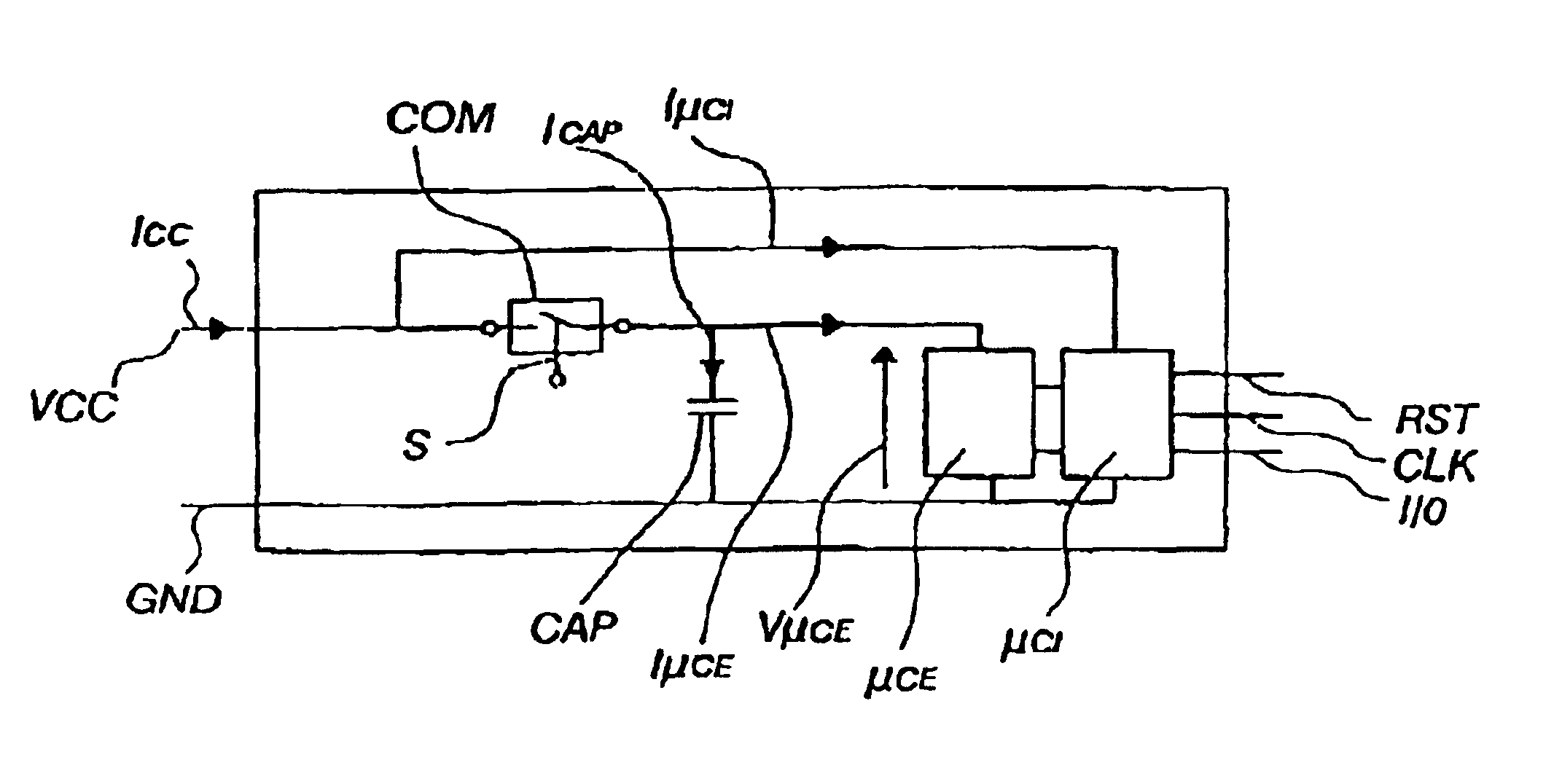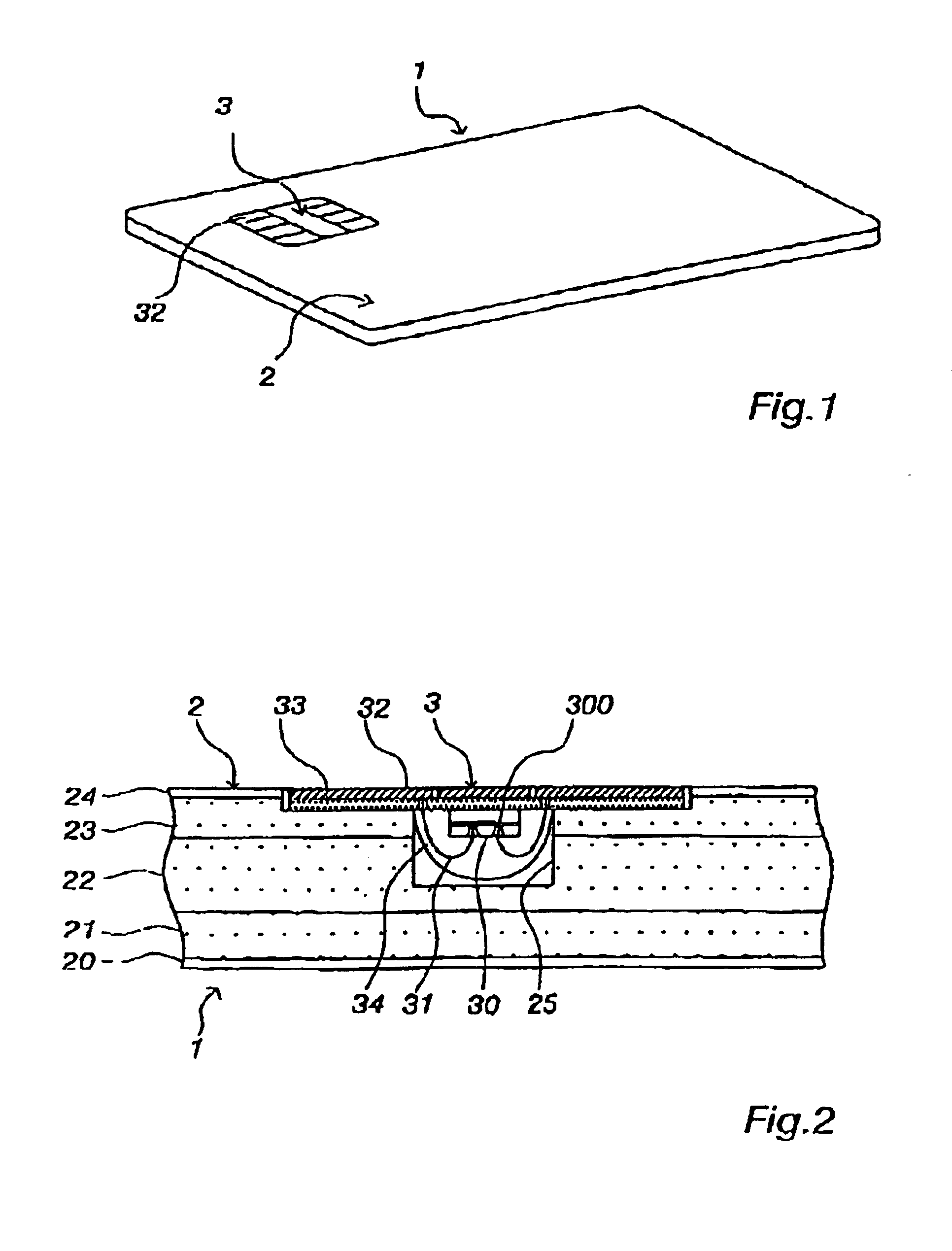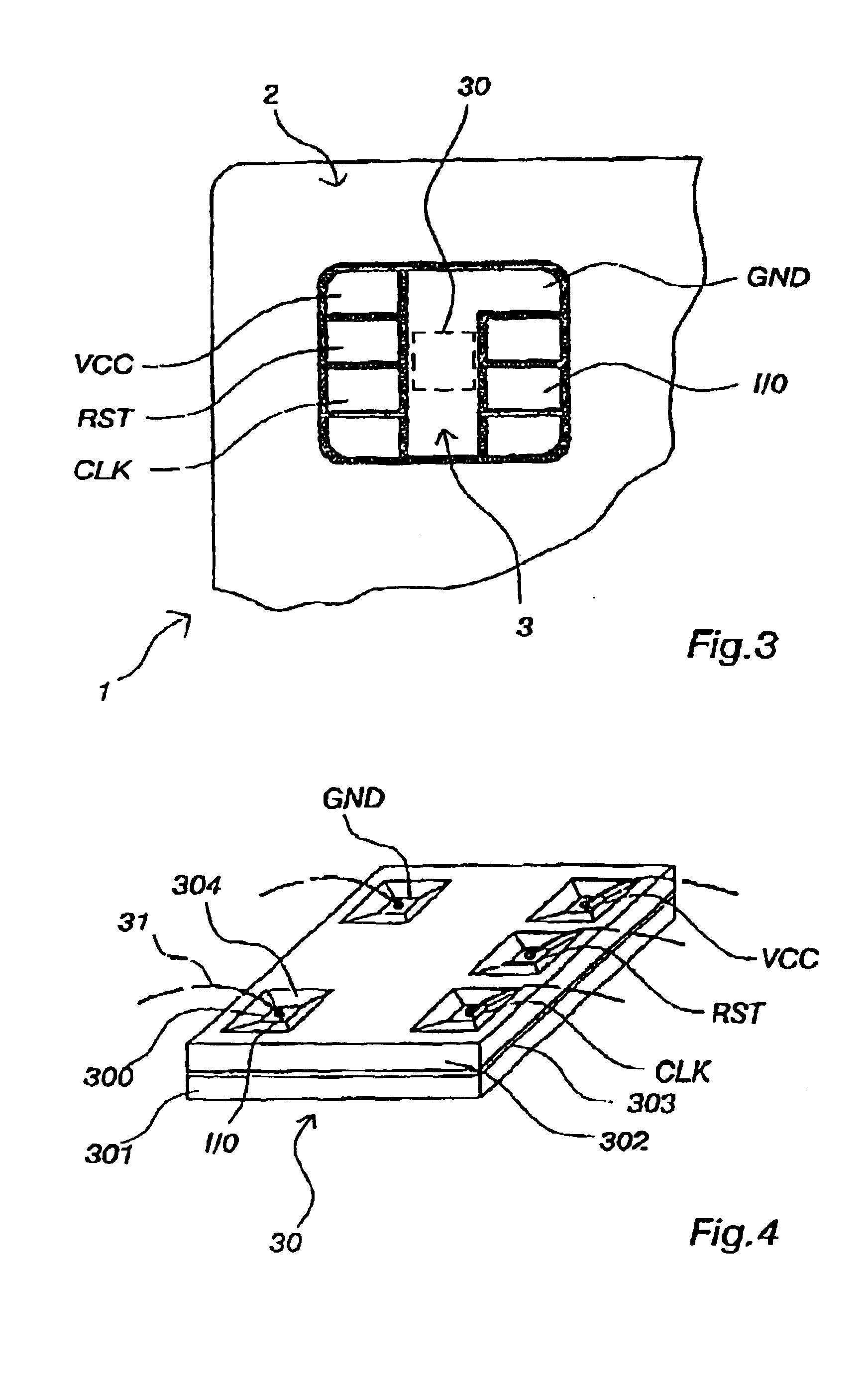Micro-controller protected against current attacks
- Summary
- Abstract
- Description
- Claims
- Application Information
AI Technical Summary
Benefits of technology
Problems solved by technology
Method used
Image
Examples
Embodiment Construction
In the mode of realisation shown on FIG. 4, the microcontroller 30 takes the form of a right parallelepiped of thickness about 180 μm and area about 10 mm2.
This microcontroller 30 includes a main layer 301 of silicon whose active face, which includes a circuit and supports the contact studs 300, is sealed to an additional protective layer 302 of silicon using a sealing layer 303. This additional layer 302 has openings 304 located opposite the contact studs 300 so that they can be connected to the contact pads 32.
In practice, there are five contact studs 300. They are the studs VCC, RST, CLK, I / O and GND respectively connected to the contact pads VCC, RST, CLK, I / O and GND of module 3. The supply contact stud VCC is intended to power the microcontroller. The reset stud RST is intended to transmit a reset signal to the microcontroller, the clock stud CLK is intended to transmit a clock signal to the microcontroller, the input / output stud I / O is intended to enable the exchange of logic...
PUM
 Login to View More
Login to View More Abstract
Description
Claims
Application Information
 Login to View More
Login to View More - R&D
- Intellectual Property
- Life Sciences
- Materials
- Tech Scout
- Unparalleled Data Quality
- Higher Quality Content
- 60% Fewer Hallucinations
Browse by: Latest US Patents, China's latest patents, Technical Efficacy Thesaurus, Application Domain, Technology Topic, Popular Technical Reports.
© 2025 PatSnap. All rights reserved.Legal|Privacy policy|Modern Slavery Act Transparency Statement|Sitemap|About US| Contact US: help@patsnap.com



